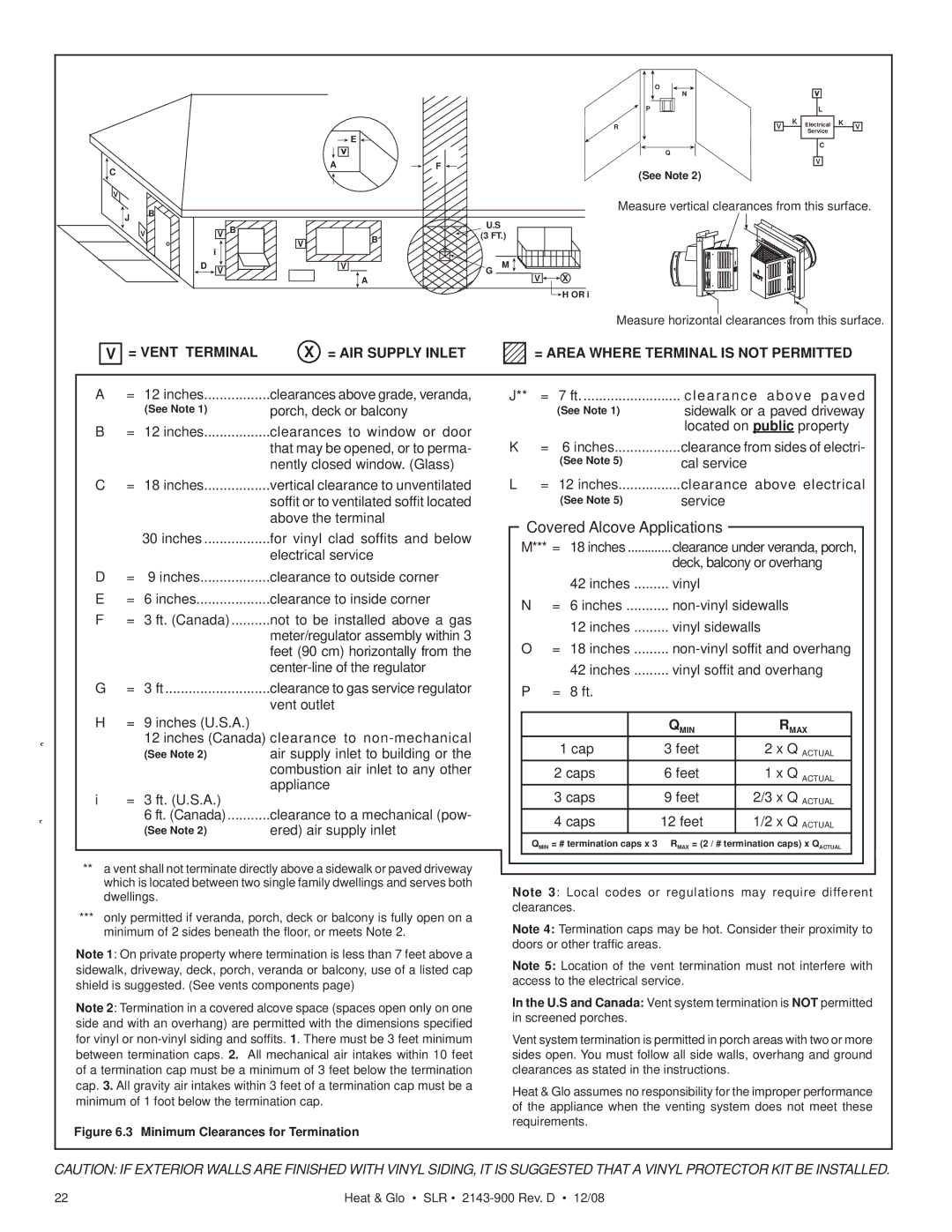SLR (Cosmo) specifications
Hearth and Home Technologies (HHT) is a leading manufacturer of hearth and home products, known for their innovative designs and commitment to quality. One of their standout products is the Cosmo series of stoves, particularly the SLR model. This product embodies the perfect blend of aesthetics, efficiency, and modern technology, making it a popular choice among homeowners looking to enhance their living spaces.The Cosmo SLR stove features a sleek and contemporary design that complements various interior styles. Its clean lines and sophisticated finish make it a statement piece in any room. The unit is available in different colors and finishes, allowing consumers to select a model that best suits their decorative theme. The glass front provides a large view of the flames, creating a cozy atmosphere while allowing for efficient heat distribution.
One of the main features of the Cosmo SLR is its high-efficiency performance. The stove is engineered with advanced combustion technology that allows it to produce more heat with less fuel, making it an eco-friendly option. This efficiency not only reduces emissions but also lowers heating costs, making it an economical choice for homeowners. The combustion chamber is designed to maximize airflow, ensuring that the fire burns cleanly and effectively.
In addition to its efficiency, the Cosmo SLR incorporates smart technology that enhances user experience. The optional remote control allows users to adjust the heat and flame settings effortlessly. This feature adds convenience, especially in cold weather when users want to quickly warm up their space without having to leave their cozy spot.
Another noteworthy characteristic of the Cosmo SLR is its versatile installation options. It can be installed as a freestanding unit or inserted into an existing fireplace, providing flexibility for homeowners with diverse space requirements. The SLR model is also designed to be compatible with a variety of venting systems, ensuring that it can fit into different home layouts easily.
Overall, the Hearth and Home Technologies Cosmo SLR stove combines style, efficiency, and advanced technology, making it an attractive heating solution for modern households. Its commitment to sustainability, customization options, and user-friendly features set it apart in the market, appealing to a wide range of consumers looking to enhance their comfort and style.

